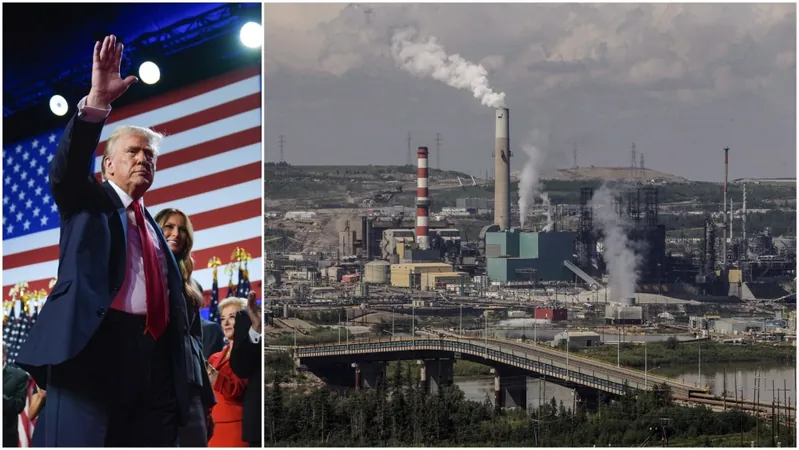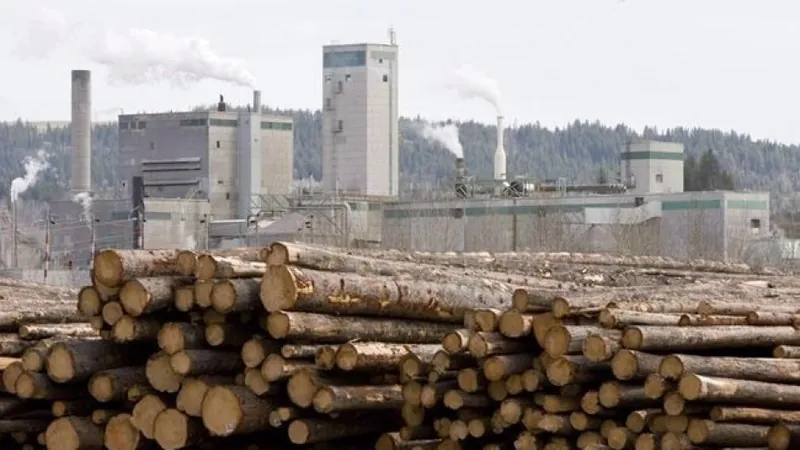
Trump's Election Marks a Pivotal Moment: Canada's Emissions Cap Faces Scrutiny
2024-11-06
Author: Jacques
Timing is Everything: Canada’s Emissions Cap Under the Spotlight
As the United States gears up for a new era under Donald Trump's leadership, Canada finds itself at a critical crossroads regarding its federal emissions cap legislation, recently dropped just a day before the U.S. election. This timing suggests the Canadian government's intent to bury significant policy changes amid the distraction of the electoral cycle.
The Dangers of a Self-Imposed Emissions Cap
The proposal of a self-imposed emissions cap has severe implications for Canada's economy. Economically, Canada already lags behind the United States in productivity by over $20,000 per individual, prompting calls for more robust support for vital economic sectors instead of restrictive legislation that may stifle growth.
A stark analysis from the Conference Board of Canada indicates that passing this emissions cap could lead to catastrophic economic consequences—losing up to 150,000 jobs, a GDP decline of $28 billion, and a mandated reduction of oil production by one million barrels a day. These metrics highlight why this legislation could do more harm than good.
Impending Tariffs and Economic Fallout
With Trump's victory, the risk of tariffs on Canadian energy exports is heightened, potentially costing Canada an additional $16 billion each year. When combined with the potential impacts from the emissions cap, this may equate to a staggering total of $44 billion in economic damage—placing every Canadian at risk of financial strain.
Furthermore, the emissions cap threatens opportunities for Indigenous communities seeking participation in resource development. Initiatives like the Federal Indigenous Loan Guarantee Program, which aims to enhance equity participation in projects, may see diminished prospects as investment drops.
Lack of Comprehensive Strategy
Another critical flaw in the government’s approach is its restrictive measure on emissions trading, allowing credits to circulate only within the energy sector. This shortsighted perspective stifles potential collaborations across various industries that could yield effective emissions reduction strategies. Alberta's successful TIER program serves as a model, demonstrating that flexible, market-driven mechanisms could yield better results than rigid legislative caps.
Moreover, the misconception that jobs in the clean-tech sector will seamlessly replace those in traditional energy roles overlooks the unique economic contributions of the oil and gas sector. Andrew Leach emphasizes the significant discrepancy between employment percentages and their corresponding economic outputs—illustrating the complexity of transition strategies.
Canada's Leading Role in Innovation
Historically, Canada's energy sector has set notable precedents in collaborative innovation. Initiatives like the Canadian Oil Sands Innovation Alliance and the Pathways Alliance underscore the industry's commitment to sustainable practices through shared technology, aiming to tackle critical environmental challenges while also supporting the economy.
As private sector contributions to sustainability efforts, like the proposed carbon capture pipeline network, amount to substantial investments, there’s a call for the government to acknowledge these efforts. Such collaborations promise job creation and bolster Canada's position in the global market.
Conclusion: The Need for a Shift in Strategy
The emissions cap legislation threatens to make Canada less competitive, particularly in the face of enticing incentives in the U.S. under the Inflation Reduction Act. A strategic retreat from this cap could align the Canadian government's policies with the innovative approaches seen in the private sector. With Trump’s presidency marking a renewed era of protectionism, the message is clear: a shift in strategy regarding emissions management is not just advisable; it's essential for Canada's economic future.









 Brasil (PT)
Brasil (PT)
 Canada (EN)
Canada (EN)
 Chile (ES)
Chile (ES)
 España (ES)
España (ES)
 France (FR)
France (FR)
 Hong Kong (EN)
Hong Kong (EN)
 Italia (IT)
Italia (IT)
 日本 (JA)
日本 (JA)
 Magyarország (HU)
Magyarország (HU)
 Norge (NO)
Norge (NO)
 Polska (PL)
Polska (PL)
 Schweiz (DE)
Schweiz (DE)
 Singapore (EN)
Singapore (EN)
 Sverige (SV)
Sverige (SV)
 Suomi (FI)
Suomi (FI)
 Türkiye (TR)
Türkiye (TR)